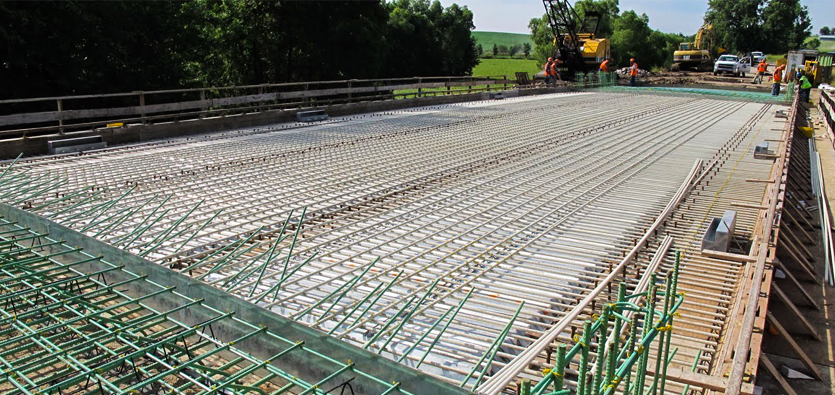Ingenious Composites in Modern Structure Projects
Ingenious Composites in Modern Structure Projects
Blog Article
Unlocking the Ecological Advantages of Recycled Composites in Construction and Style
In the realm of construction and layout, the use of recycled compounds holds substantial pledge for enhancing sustainability techniques and lowering ecological influence. The shift towards a more lasting future in these sectors hinges on unlocking the complete possibility of recycled compounds.

Environmental Effect Reduction
The reduction of ecological effect via the usage of recycled composites in building and construction and layout plays a critical duty in sustainable methods. By including recycled composites right into building materials, the building industry can considerably decrease its carbon footprint and add to a more environmentally friendly future. These lasting materials, made from repurposed plastics, wood fibers, or other recycled components, provide a sensible alternative to conventional building and construction materials without endangering on top quality or durability.
Recycled compounds aid draw away waste from land fills and decrease the need for removing raw products, hence saving natural sources. In addition, the production process of these composites usually takes in much less power and emits fewer greenhouse gases contrasted to producing virgin products (composites). This change towards utilizing recycled compounds not only minimizes ecological harm yet also promotes a circular economic climate by urging the reuse of products that would certainly otherwise be discarded
Waste Minimization
With an emphasis on lessening waste in building and layout, the assimilation of recycled composites provides a lasting option to decrease ecological impact. Waste minimization is a critical facet of sustainable techniques, and making use of recycled compounds presents a possibility to attain this objective effectively. By using products that have currently offered their preliminary objective, such as recycled plastics or recovered wood fibers, the building and style markets can dramatically minimize the quantity of waste generated and sent to garbage dumps.
Recycled composites have the possible to draw away substantial quantities of waste from typical disposal techniques, adding to a much more round economic climate where resources are made use of successfully. In addition, the production process of recycled compounds usually eats less power and creates less discharges contrasted to virgin materials, additionally reducing the ecological footprint of building and construction and layout tasks.
Carrying out waste minimization methods with the consolidation of recycled composites not just assists in preserving natural deposits however likewise advertises a much more lasting technique to building and creating for a greener future.
Energy Conservation
Incorporating recycled compounds not only minimizes waste in building and construction and layout however also plays an important duty in enhancing energy preservation techniques within the market. Using recycled compounds in building and construction can dramatically add to power conservation with various means. Firstly, the manufacturing of virgin products commonly needs substantial energy inputs, whereas using recycled composites takes in much less power, thus minimizing overall energy usage. Furthermore, including recycled compounds can add to better insulation buildings in structures, minimizing the demand for too much heating or cooling, and consequently decreasing energy usage for climate control. Moreover, the light-weight nature of lots of from this source recycled compounds can lead to lighter structures, calling for less energy for transport and setup. By promoting the usage of recycled compounds in building and style, the industry can make substantial strides towards accomplishing power efficiency and lowering its carbon footprint, eventually adding to an extra sustainable built environment.
Carbon Impact Decrease
Enhancing sustainability practices with the usage of recycled composites in building and construction and layout considerably lowers the carbon impact of the industry. By including recycled materials right into the production of compounds, the need for virgin sources reduces, resulting in lower power intake and greenhouse gas discharges connected with conventional manufacturing processes. This reduction in carbon impact is vital in combating climate adjustment and advertising a more eco pleasant technique to building and construction and design.
Moreover, making use of recycled composites likewise helps in diverting waste from landfills, thus alleviating the environmental effect of disposal and advertising a round economic climate. The carbon impact decrease accomplished via the fostering of recycled composites straightens with the global push towards sustainable techniques and the decrease of industrial discharges. It showcases a dedication to responsible resource management and a shift in the direction of greener choices in the building and construction and layout sectors. Eventually, by focusing on the integration of recycled compounds, the sector can make substantial strides in lowering its carbon footprint and adding to an extra lasting future.
Lasting Future
The integration of recycled composites in building and construction and layout not only addresses instant environmental problems but also lays a solid foundation for a lasting future in the industry. By incorporating recycled composites into building materials and items, the building and design sectors can dramatically lower their reliance on virgin sources, causing an extra circular economic situation. This change in the direction of sustainability is important for reducing the ecological influence of traditional construction practices, which frequently lead to high degrees of waste generation and resource depletion.

Conclusion
Finally, recycled compounds offer substantial environmental benefits in building and style by reducing environmental influence, lessening waste, preserving power, reducing carbon footprint, and advertising a lasting future. Embracing the usage of recycled composites can add to a much more environmentally-friendly approach to building and design, eventually leading to an extra sustainable and greener future for all.
The reduction of environmental influence with the usage of recycled compounds in construction and layout plays a crucial duty in sustainable practices.With an emphasis on lessening waste in building and construction and layout, the combination of recycled compounds offers a sustainable option to decrease ecological influence. By advertising the usage of recycled composites in building and style, the market can make significant strides in the direction of attaining power effectiveness and reducing its carbon impact, ultimately contributing to a more sustainable developed environment.

Report this page